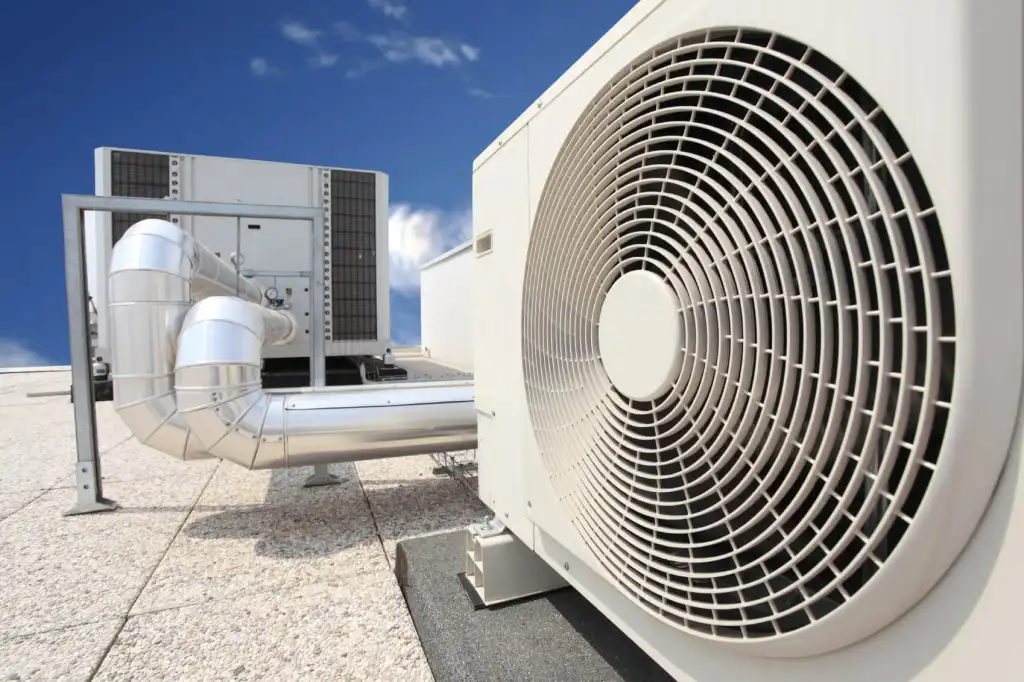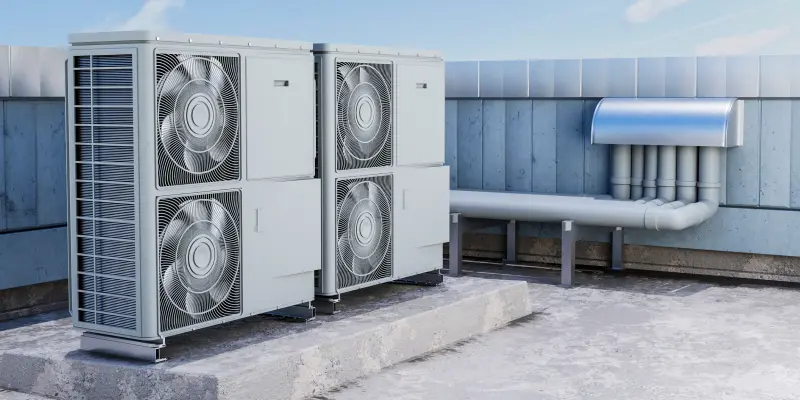As the scorching summer heat engulfs us, there’s a modern-day technology that comes to our rescue: commercial air conditioning. In shopping malls, offices or movie theatres air conditioning is a crucial element of modern life. Have you ever wondered what its working principle is? We are going to help you discover the scientific basis and working principle of a commercial Air Conditioning’s cooling powers. So, get a cool beverage and let’s get started!
The Genesis Of Air Conditioning
To be able to understand the workings of commercial air conditioning we must first look back to study its origins. Modern day air conditioners originated around the late 19th century. Engineers and scientists began to experiment with cooling methods. They tried to reduce humidity to improve the quality of indoor air. However it was Willis Carrier who revolutionised the industry by inventing the first modern air conditioner in 1902 which set the foundation for the development of commercial air conditioning we have today.
The Science Behind Cooling
At its heart commercial air conditioning is based on the principles of fluid mechanics and thermodynamics. The most important components that facilitate cooling are the condenser, evaporator and compressor. If air is treated it goes through a sequence of phases which absorb and release heat and create a cooling effect.
The Role Of The Refrigerant
One of the main protagonists in the air conditioning drama is the refrigerant. The chemicals used in refrigerants were selected because of their ability to change states at low temperatures. As refrigerant circulates throughout the system, it goes through changes in temperature and pressure and temperature, allowing it to take heat from indoor air before releasing it out.
The Evaporator:
The place where magic happens!
Within the air handling system of commercial air conditioners is the evaporator. It is an array of pipes that are coiled, through which the refrigerant flows. When warm indoor air is blown through these coils, the refrigerant absorbs heat from the air and causes it to evaporate from a liquid into gas. This transition in phase creates the cooling effect that calms us during a hot day.
The Compressor:
The refrigerant or usually known as the coolant is present in a gaseous form. It must be compressed in order to raise its temperature and increase the pressure. That’s where the compressor is useful. It increases the efficiency of the cooling system. The pressurised and hot gas is then transferred to the unit for condensing situated outside of the building.
The Condenser:
Exchange of heat takes place with the help of a condenser. It allows the refrigerant system to release the heat absorbed by the indoor air. When the hot gas is introduced to the condenser, it cools and then condenses into liquid form. The heat energy is expelled to the outdoors and the refrigerant is cooled. It is ready to start the cycle.
Air Ducts And Vents Distribution Of Comfort
After cooling the air after cooling, it is distributed throughout the building through an air duct network and vents. The ducts and vents are designed in a way to ensure an even distribution and maximum cooling in all areas of the commercial area.
Sensors And Thermostats Smart Cooling
Commercial air conditioners of today are fitted with sophisticated sensors as well as thermostats to regulate humidity and temperature levels. These intelligent systems adjust the power of cooling according to the conditions which ensures maximum energy efficiency and comfort.
Maintenance And Efficiency
To ensure that commercial air conditioning systems operate efficiently regular maintenance is vital. Filter obstructions leaky ducts, leaky ducts, or worn-out components can impact the efficiency of the system and result in increased energy consumption and decreased capacity for cooling.
Efficiency And Environmental Impact
With the increasing concern for environmental sustainability The HVAC industry is working to increase energy efficiency while also reducing its carbon footprint. Modern commercial air conditioning systems have been designed to meet the strictest energy efficiency standards, and use eco-friendly refrigerants which have a less potential for global warming (GWP). These innovations cut down the environmental impact and also the energy cost..
Variable Refrigerant Flow (Vrf) Systems:
Do you know what has emerged as a game changer in the commercial air conditioning market? Variable Refrigerant-Flow (VRF) systems. In contrast to traditional systems, VRF systems can vary the flow of refrigerant in the individual indoor units and allow precise temperature control in various zones simultaneously. This ability to control temperatures in several zones simultaneously prevents overcooling or overheating when in unoccupied areas which in turn improves comfort and efficiency.
Mini-Split Systems With Ductless
Mini-splits that are ductless offer an adaptable and effective solution for commercial buildings that do not have existing ductwork. They are made up of small indoor units that are connected to an outdoor compressor. They offer targeted cooling to certain zones, making them perfect for retrofitting or in areas that have little space.
Chilled Water Systems Cooling At Scale
In commercial buildings with larger spaces chilled water systems are typically chosen for their capacity as well as their energy efficiency. These systems use central chillers to cool water. It is then circulated through coils within air handling units in order to cool indoor air. Chilled water systems can be located in shopping malls, hotels, hotels, and offices.
The Role Of Air Quality In Commercial Spaces
Beyond the control of temperature commercial air conditioning plays a vital role in ensuring the indoor air quality. Air filters capture pollen, dust and other harmful substances. This keeps dust and other harmful substances from circulating in the air inside. Some advanced systems also include air purifiers and Ionisers along with filters to improve the indoor air quality.
Smart Controls, As Well As Automation
In the age of technology , smart commercial cooling systems have not been left unaffected. The ways we work with and manage cooling systems has totally changed , thanks to integration of automation and smart controls. Building management systems are now accessible remotely via mobile devices which allows facility managers to control and alter settings while on the move optimising energy use and comfort.
The Future Of Commercial Air Conditioning
As technology improves, and commercial cooling technology improves, technology for air conditioning, its future appears promising. Researchers and engineers are always seeking out innovative and novel methods to cool.
Engineers and researchers are working to find renewable sources of power for air conditioners, like geothermal energy as well as other sources of renewable energy like solar power. It’s an efficient method to cut down on carbon emissions, and also to provide opportunities for a sustainable, long-term and sustainable future.
The Balance Between Energy Conservation And Comfort
As the need for air conditioning is increasing, it is essential to find the right balance between comfort and conserving energy. The promotion of techniques that use less energy including setting temperature guidelines and optimising system efficiency, will ensure that the commercial air conditioning system is effective and eco-friendly.
Conclusion
Commercial air conditioning is a modern luxury in the 21st century and, more importantly, it’s a testimony to humankind’s spirit and technological advancement. From the very first innovations of Willis Carrier to the cutting-edge technology of today seeking an enviable and comfortable environment has prompted a number of technological advancements.
Commercial air cooling offers a lot of advantages, but individuals have also become conscious of the environmental impact. This conscious environmentalist has driven engineers to look for more sustainable options. Therefore, the next time you enter a refreshingly cool environment, make sure you are amazed by the incredible technological advancements and scientific concepts which allow us to enjoy a relaxing time even in the most extreme of temperatures!









